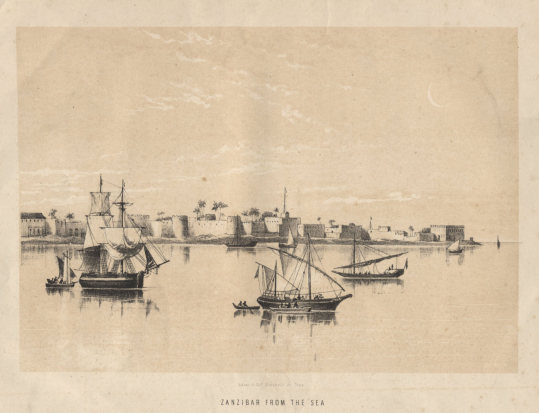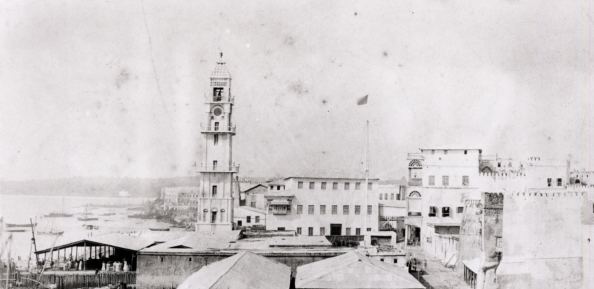The
age
of
Stone
Town
is
in
some
dispute.
Did
it
rise
from
a
fishing
village
known
to
have
existed
on
the
point
of
the
peninsula
since
the
12th
century
or
is
it
even
older?
Perhaps
the
result
of
a
10th
century
immigration
from
Persia?
Perhaps
it
arose
from
the
visits
of
9th
century
Islamic
disciples?
Perhaps
it
started
as
a
1st
century
outpost
of
the
Queen
of
Sheba?
All
have
been
suggested
by
historians.
Or
must
we
look
even
further
back,
to
five
or
six
thousand
years
ago
when
indigenous
Africans
crossed
the
great
Rift
valley
and
first
occupied
the
islands
of
East
Africa?
Was
it
they
who
truly
created
the
Swahili
Coast
by
conquering
the
reefs
and
tides
of
the
Azanian
sea?
Was
it
they
who
cultivated
a
civilization
of
Island
City
States
from
Lamu
to
Lindi,
an archipelago of Stone Towns spanning almost a thousand kilometres?
As
the
site
of
the
largest
Stone
Town
in
the
world,
Zanzibar
is
well
worth
a
visit.
Tourists
are
welcome
on
Zanzibar
and
the
infrastructure
for
guests
has
greatly
expanded
in
the
last
few
years.
Hotels
and
Guest
Houses
are
available
in
all
price
ranges.
Accommodations
extend
from
basic
backpacker
support
to
luxurious
private
islands.
There
is
an
international
airport
about
5
km.
from
Stone
Town
and
many
ferry's
now
ply
the
short
sea
routes
between
the
Islands
and
the mainland.

All Rights Reserved, 2000 - 2017
Created by:
Torrence Royer
Comments are welcome.
Please leave a note in the public GUEST BOOK
or send a private Email to:
Barghash@msn.com

An Illustrated history of the Zanzibar Islands.
ZANZIBAR UNVEILED

Located just off the coast of East Africa, the main islands of ZANZIBAR are Unguja, Pemba and Tumbatu.
Stone
Town,
on
the
western
shore
of
Unguja
Island,
is
the
Capital
of
this
region.
The
city
gained
its
name
from
the
many
large
multi-story
"stone"
buildings
that
fill
the
old
town
area.
These
structures
are
actually
constructed with coral and mortar, not stone.
There
are
currently
about
1,700
of
these
buildings
in
the
Stone
Town
section
of
Zanzibar
City.
Over
1,000
of
these
have
been
classified
as
having
architectural
significance.
In
this
small
area,
which
was
originally
a
narrow
peninsula,
almost
an
island
at
times,
there
are
23
"landmark
buildings",
two
cathedrals,
over
50
Mosques, 157 balconies, verandas and loggias and more than 200 carved doors.
Zanzibar's Stone Town has been designated a "World Heritage Site" by the United Nations.
Please enjoy this small sample of Zanzibar’s long history.
Islands that lie ‘like a jewel in the lap of Africa’.





















































